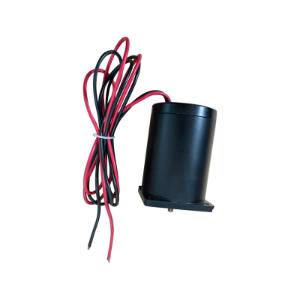BT001 Honda Accord Windshield Wiper Motor
Power Voltage 12V DC, 35W No-load Current Low speed ≦1.5A, high speed ≦2.0A No-loa...
View MoreUnderstanding the Role of Starting Torque in Oil Pump Motors
Starting torque is a critical factor when selecting a motor for high-load applications, especially in systems that demand immediate response under pressure. In the context of an Oil Pump Motor, adequate starting torque ensures that the motor can overcome static inertia and begin moving oil through pipelines or systems even when resistance is high. Without sufficient torque at startup, motors may stall, overheat, or fail to initiate movement, causing operational delays or damage to the entire pumping system.

Factors That Influence the Starting Torque Performance
Several engineering and operational variables affect whether an Oil Pump Motor can generate enough starting torque. These include the motor’s design type (e.g., induction, synchronous, or brushless DC), the power supply characteristics, the type of pump it is driving, and the viscosity of the fluid being moved. High-viscosity oils or systems with vertical lift requirements impose greater resistance, requiring the motor to produce a proportionally higher torque during startup. Motors intended for such duties are often engineered with torque-boosting features, such as enhanced rotor design or auxiliary starting mechanisms.
Motor Selection Based on Load Characteristics
Choosing the right Oil Pump Motor requires a close analysis of the system's starting conditions. For instance, a motor running a centrifugal pump may require less starting torque than one driving a gear or screw pump, which typically operate under constant high load. In high-load environments such as industrial hydraulics, mining, or heavy-duty lubrication systems, motors with high locked-rotor torque and suitable torque-speed curves are essential. This ensures that the motor can overcome the initial static load and quickly reach operational speed without performance issues.
Impact of Power Supply and Control Methods
The power supply system and control strategies significantly influence how much torque a motor can generate at startup. Using soft starters, variable frequency drives (VFDs), or direct-on-line (DOL) starters can either enhance or limit the available torque. For example, VFDs allow for adjustable torque during startup, which can be critical in systems requiring gradual acceleration to avoid mechanical shock. However, improper configuration may reduce torque below what is needed for high-load conditions. Therefore, it’s vital to match the motor control method with the load demands and motor specifications.
Evaluating Manufacturer Specifications and Real-World Testing
When determining if a specific Oil Pump Motor meets high starting torque demands, reviewing the manufacturer's datasheets is a good starting point. Specifications like starting torque as a percentage of rated torque, current draw during startup, and torque-speed curves provide valuable insights. However, real-world conditions may differ from lab environments. Therefore, field testing under load or simulations can help verify that the motor performs as expected when challenged by real operational stresses such as cold starts, heavy oil, or backpressure in the system.
Design Enhancements for High-Torque Applications
To meet high starting torque needs, some Oil Pump Motors are designed with reinforced windings, improved magnetic circuits, or additional starting components like capacitors in single-phase models. In three-phase industrial motors, using specially wound rotors or motors rated for NEMA design D (which offers high starting torque) is a common solution. Additionally, pairing the motor with a pump that has low starting friction and a compatible impeller design can also improve overall startup success.
Conclusion: Matching Torque Capabilities With System Demands Is Essential
Whether an Oil Pump Motor can deliver sufficient starting torque for high-load applications depends on multiple interrelated factors, including motor type, system load, control methods, and environmental conditions. Careful evaluation of technical specifications, coupled with appropriate system integration, ensures the motor can handle the stress of high-resistance startups reliably. Selecting a motor with proven high starting torque performance is not just a technical decision—it is essential to ensuring system uptime, safety, and long-term operational success.